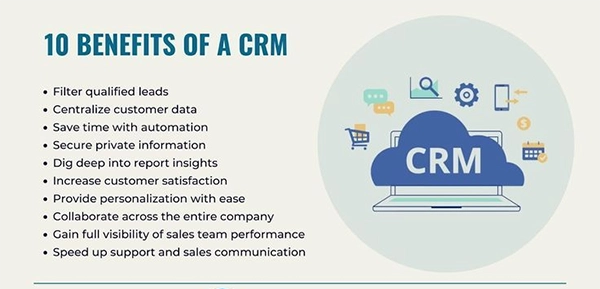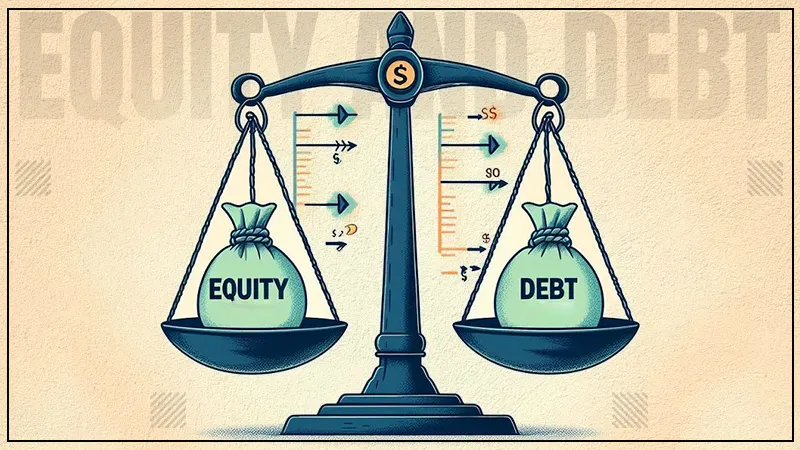How to Spot Your Most Worthwhile Customers Using CRM Filters
Did You Know? According to Forbes, around 50% of salespeople rely primarily on CRM software tools, highlighting their significance in modern industrial processes.
Apart from sales, every business industry is acquiring CRM filters as a game-changing solution to build strong relationships with its customers. It helps understand who your best clients are and which areas need more effort.
With the right filters, you can determine which clients are making your business more profitable and why. So that you can implement the functioning strategies in other areas as well.
That’s why we bring this written guide, which will help you learn how to use CRM filters in a smart way to gain more profits.
Don’t wait, just read this article now!
KEY TAKEAWAYS
- Understand profitability to know how to make money before you use CRM filters.
- Check which clients take too much time or resources compared to their revenue.
- Sort clients by account size and revenue to see who brings in the most.
- Track how often clients connect with you and respond to your efforts.
- Also, look for the age, location, and industry to see market clients.
- Filters should be checked and often updated to stay useful.
Understanding How a Financial Advisor Can Make Profit
Defining what your practice’s profitability is, before commencing CRM filtering, is necessary. Some advisors earn a living mainly from advisory fees or commissions received from their services. For other business organizations, it is about what a client brings in the long run, like bringing up customers, buying more products, and making things smoother to service. Before using CRM tools well, you need to determine the definition they have in your business.
Once you know the profitability expectations for your firm, it’s incumbent to find out which aspects of client work are most valuable. For example, these index numbers might look at how large the assets under management are, how often you interact, or the speed with which clients respond. If you link these qualities to your profit margin, you can use them to utilize valuable CRM filters. With these filters, you can split up your clients in a way that changes the state of the planning and engagement you do.
INTERESTING FACT
“Using CRM filters can improve marketing ROI by 25% since you can better target your messages to the right audience.”
Looking at Cost-to-Serve Data
It’s also vital to look at the cost-to-serve when choosing which clients to pursue. Some CRM for financial advisors record how often they encounter clients, how much paperwork they do, and how long they spend on each client. Analyzing these metrics enables consulting companies to identify those clients that take up a lot of effort but generate lower revenue.
Combining your analysis of service intensity and account value helps you identify clients that make a positive impact on your company. Bring home the bacon, greater profitability is often found with cases that are less likely to require extra attention, are very active online, and know what they want from their finances. Using the data on cost-to-serve, you can spend your time better and ensure your model meets clients’ needs.
Filtering by Revenue and Account Size
You can easily identify your most profitable clients by examining their revenue or account value. Much CRM software can be used to label clients according to their financial metrics, including annual fees, the total worth of their assets, or what kinds of assets or products they own. If you sort your clients as per these factors, you may end up with a list of your strongest revenue earners.
Revenue does not always result in a company’s profitability. Pay close attention to those clients with the biggest accounts tend to take more time and drive down margins. You can use both revenue filters and service rate or time-spent stats for a better understanding. When you look at it this way, you can check through comparable income as well as the costs and future impact of earning it.
Using Engagement and Communication Metrics
How your clients interact with your company also affects their overall profitability. CRM filters help you see how frequently clients are in contact, such as when they attend reviews, view emails, or answer financial planning tips. An engaged audience usually stands for trust and loyalty, which helps companies become profitable for a longer time.
You can get a different understanding of client value by picking them out by how recent their last contact was, the number of assemblages logged, or how responsive they are to emails. Customers who keep in touch and take action may have average-sized needs, but it becomes easier to help them, and they are usually faithful. Such a filter allows the business to see clients who are profitable matches for growth opportunities or premium services.
Identifying Behavioral and Demographic Trends
With the help of CRM filters, you can spot top-value clients in your client base. Looking into age groups, career kinds, areas of residence, or how people are referred to can show you which groups are your top clients. The data allows businesses to guide their marketing endeavours, set up referral programs, and design special services meant for others with like interests.
Sometimes, you notice that customers spending in certain industries, such as technology or healthcare, have a greater lifetime economic value for your business. Extracting these patterns from your CRM data allows you to align your ideal client outline. Knowing the traits of your top clients helps you pick out and hold on to more clients just like them.
Maintaining Regular Review Processes
As soon as you know which filters show more gainfulness, you should set up regular reviews for yourself. Filters in your CRM database need to be applied regularly to make sure you’re always informed. Because market, customer, and profitability factors often shift, you should keep an eye on your CRM conditions and filter them regularly.
You do not call for guessing which customers bring in the most profit. You can turn your data into clear perceptions when you set up the right filters on your CRM. These tools give you the opportunity to plan your actions based on your firm’s ongoing goals, not just on gross, engagement, or cost-to-serve. It is not just for memory; CRM also enables you to make better selections. If you apply it smartly, it becomes one of your strongest implements in your consulting practice.
At last, here is a quick view of the top 10 benefits of using CRM in a business.

Frequently Asked Questions
Ans: CRM filters help you see who your best clients are, which ultimately saves time and lets you grow your business smarter.
Ans: You can sort clients by revenue, how much you talk to them, and how engaged they are.
Ans: Yes, CRM filters help you find which clients might want more services and relevant people.
Ans: Check them regularly–every month or at least once a week.








